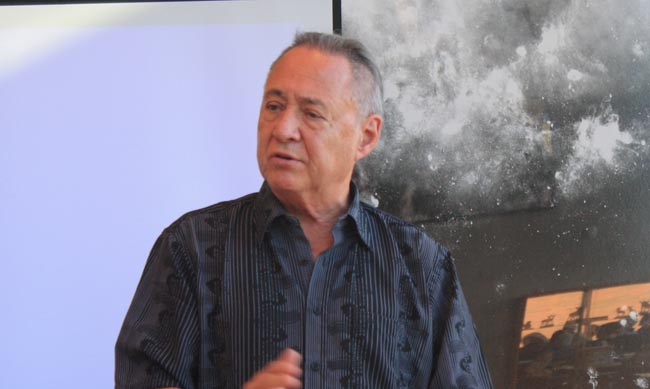Top Ten Reconciliation Tips

By Maurice Switzer
Dear Mister-now-Senator Murray Sinclair:
Thank you for spending six years of your life to create an excellent report about how Natives and Canadians might do a better job of getting along.
However the very heavy package I got in the mail from your Truth and Reconciliation Commission was missing an instruction manual, which I thought was just an oversight on the part of the shipping department. But when I called they said there was no manual, that it was up to everyone in Canada to figure out how to make sure your 94 recommendations happen.
Now, I don’t want to be rude, Murray, but not much has happened about that heavier Royal Commission report that came out just 20 years ago, and it had 440 recommendations. But it didn’t have a manual either, so that report – which the government said was going to “gather strength”, is actually just gathering dust!
Like the saying goes, I’d rather be part of the solution than part of the problem, so I thought the least I can do is suggest some ideas you might consider in case you get around to adding an instruction book to your report at a later date.
What prompted me to offer my help was when I learned that the Manitoba tribe of Parks Canada was offering visitors to their Fort Garry site an “authentic spiritual experience” in a sweat lodge ceremony for only $59.50 (plus applicable taxes).
Even without a manual, Murray, I am certain people know this is not how Reconciliation is supposed to work. I mean, what would the higher-ups in Parks Canada think if they were asked to cough up cash to attend a church service?
Maybe that’s a bad example, but my point is you’ve got to get some guidelines in place or all your hard work on that TRC report is going to go the way of the buffalo.
Feel free to use any of the following Top Ten Tips to help folks be sure they’re on the Reconciliation Trail.
- The fact that your second-best friend in kindergarten may have been Ojibway is less important than you might think
- Endorsing treaty rights is a bigger deal than cheering for the Cleveland Indians.
- There is no need to give tobacco to every Indian you meet. They could assume you’re waiving your building’s no-smoking policy.
- Making a Spirit Plate out of pizza is not appropriate, unless the Elder’s last name ends in “i”.
- Avoid saying the Royal Proclamation of 1763 was issued by “Mad” King George III.
- Check references when hiring Indigenous cultural resource advisors. If an applicant says he is seventh generation Beothuk, call his band office.
- Anishinaabe people do not usually refer to their dodems as “power animals”.
- The Medicine Wheel is a spiritual symbol that recognizes that all people are related – and can be just as dumb as each other.
- If you must refer to your weekly staff meeting as a “pow-wow”, consider inviting a Drum group.
- Potawatomi Elders will ignore all requests to smudge near gas pumps.
These would fit nicely into an appendix to the TRC report, Murray, no charge, you’re welcome.
And – if worse comes to worst — I suppose if nothing happens with 94 recommendations it’s not as bad as people not doing anything about 440 of them.
Maurice Switzer is a citizen of the Mississaugas of Alderville First Nation. He lives in North Bay where he operates Nimkii Communications, a public education practice with a focus on the Treaty relationship.


